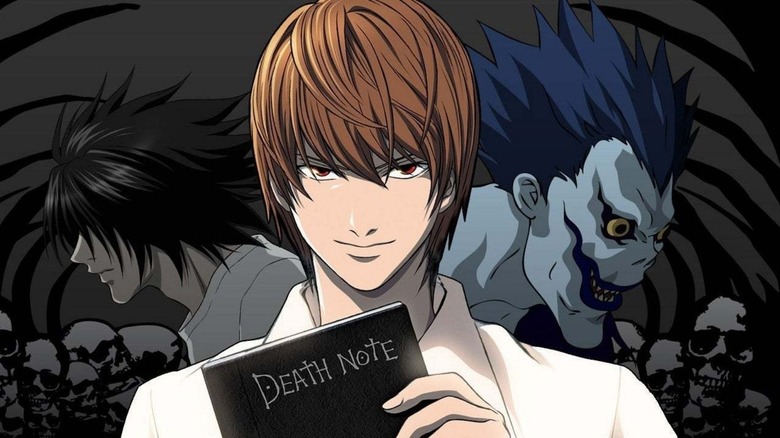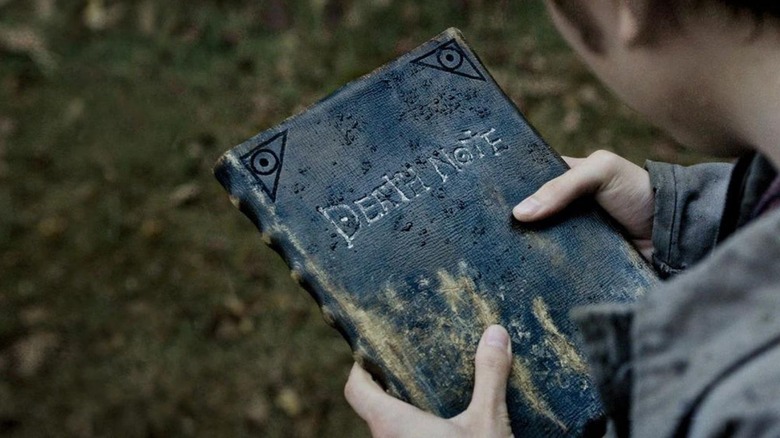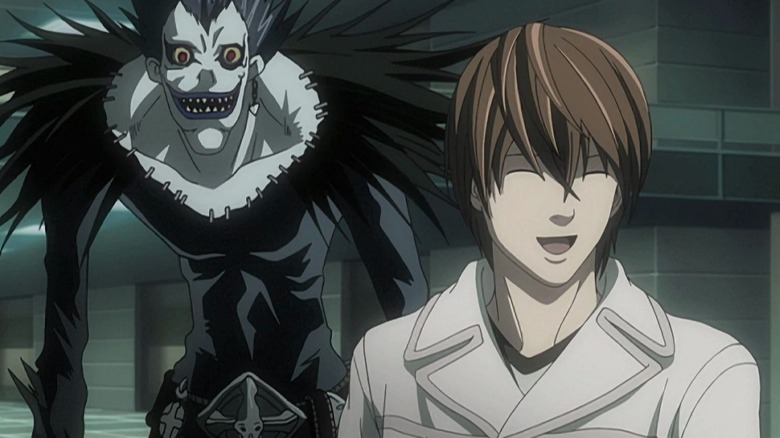The Death Note Anime Controversy Explained
"Death Note" is among the most famous Japanese manga series in the world. It has sold over 30 million copies in Japan and was adapted into an anime television show that became popular with American audiences.
Created by Tsugumi Obata and Takeshi Obata, "Death Note" has a sinister premise. The story follows Light Yagami, a teen genius and high school student who discovers a mysterious, supernatural notebook called the "Death Note." The book is revealed to have belonged to Ryuk, a Shinigami (a death god) who grants the book's holder the ability to kill anyone by writing their name and cause of death on its pages. Consisting of 37 episodes, the series centers around Light's attempt to carry out a worldwide massacre of immoral individuals (mainly criminals) so he may live in a crime-free society, while the elite Japanese police task force led by a detective named L work to hunt him down.
The anime depicts Light's abuse of his newfound power and how it influences him to take on the alias of a godlike identity known as Kira. The series is compelling and features some seriously twisted characters, and it's so suspenseful you can never predict what happens next.
It's one of the best psychological thriller anime series of all time — but even the greatest forms of entertainment can be embroiled in sensational controversy.
Death Note caused chaos in Chinese schools
"Death Note" is one of the many manga/anime shows banned in China for its graphic content. In early 2005, the manga stirred significant controversy in the country after students in the Chinese city of Shenyang began creating their own death notes.
Students began purchasing stationery notebooks and followed the manga's instructions, writing names of people they disliked on its pages. In response, the school banned the use of stationery notebooks entirely. While many felt that the ban was an overreaction and completely unnecessary, Chinese parents and teachers approved it, describing the death note as "a poison that creates wicked hearts." They stated that the ban was meant to protect innocent children from the "evil notebook."
The Shenyang Night Report also published a quote from a middle school student who told the publication that many of his classmates owned death note notebooks and wrote down names of teachers they disliked when they got tired of studying.
That wasn't the end of the controversy
In 2007, the popularity of "Death Note" was at an all-time high — the manga's first anime adaptation had been released a year earlier. An extensive news report from a Chinese publication details "Death Note" driving notebook sales in connection to its popularity among students in the Chinese city of Shenzhen.
The well-known notebook found in Takeshi Obata's manga became a preferred toy among elementary and middle school students. When parents and teachers were made aware of the new trend among young students, they began voicing their concern over the effect it could have on children, expressing their apprehensions about it negatively impacting a child's growth.
Days after the report was published, the Cultural Market Administrative Enforcement Department confiscated over 187 death note books from toy and school utensil stores in the city. Chinese authorities further banned stores from producing the notebooks, deeming them illegal products and threatening severe punishment if they were continued to be sold.
While "Death Note" has captured the hearts of anime and manga lovers alike, it certainly does feature a dark tale and several unsettling scenes.
It is more than just a supernatural high school drama — it explores how power can corrupt the most kindhearted and how rapidly a good man can make his descent into evil. Whether it deserves to be banned, however, is a question that remains to be answered.


